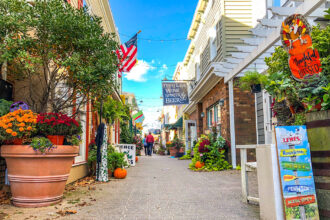Nestled in the serene landscapes of southern Bihar, Bhimbandh Wildlife Sanctuary is a treasure trove of biodiversity and natural beauty. Spread across an expansive area of approximately 681 square kilometers, this sanctuary offers a unique blend of lush forests, cascading waterfalls, and diverse wildlife. Established in 1976 under the Wildlife Protection Act, Bhimbandh is not only a haven for nature enthusiasts but also a critical habitat for numerous endangered species. In this article, we delve deep into what makes Bhimbandh Wildlife Sanctuary a must-visit destination, exploring its flora, fauna, activities, and much more.
The Rich Biodiversity of Bhimbandh Wildlife Sanctuary
Flora: A Verdant Paradise
The sanctuary is home to an incredible variety of plant species that contribute to its vibrant ecosystem. Dense sal forests dominate the landscape, interspersed with bamboo groves, shrubs, and grasslands. These varied habitats provide shelter and sustenance to countless species of animals, birds, and insects.
Key Vegetation Types
- Sal Forests : The dominant tree species, Shorea robusta , forms the backbone of the sanctuary’s vegetation. Sal trees are known for their resilience and ability to thrive in diverse climatic conditions. Their dense canopy provides shade and creates a microclimate conducive to the growth of smaller plants and herbs.
- Bamboo Groves : Clusters of bamboo add to the forest’s density and serve as food sources for herbivores like elephants and deer. Bamboo also plays a vital role in soil conservation, preventing erosion during heavy rains.
- Medicinal Plants : Rare herbs like Aloe vera , Asparagus racemosus (Kokilaksha), and Emblica officinalis (Indian gooseberry) thrive here, offering insights into traditional Ayurvedic practices. These plants have been used for centuries by local tribes for treating ailments ranging from digestive issues to skin disorders.
The region’s tropical climate ensures year-round greenery, making it a visual treat for visitors. Seasonal flowers like orchids and rhododendrons bloom during specific months, adding bursts of color to the otherwise verdant canvas. During monsoon season, the entire sanctuary transforms into a lush paradise, with streams swelling and waterfalls roaring at full force.
Fauna: A Haven for Wildlife Enthusiasts
Bhimbandh Wildlife Sanctuary is renowned for its diverse wildlife, including some of India’s most iconic species. Visitors can spot majestic animals such as leopards , tigers , and Indian bison (gaur) during safaris. The sanctuary also houses smaller yet equally fascinating creatures like spotted deer , sambar deer , wild boars , and jackals .
Mammals
Among mammals, the Indian leopard is perhaps the most revered resident of Bhimbandh. These elusive predators roam freely across the sanctuary, often seen near water sources. Tigers, though rare, occasionally make appearances, especially during early morning or late evening safaris. Smaller carnivores like foxes and civets play crucial roles in maintaining the food chain.
The Indian bison, or gaur, is another highlight of the sanctuary. These massive herbivores are the largest wild cattle species in the world and are often spotted grazing in open meadows. Herds of elephants can also be seen bathing in rivers and streams, creating unforgettable moments for visitors.
Birds
Birdwatchers will find themselves in paradise, as Bhimbandh boasts over 200 species of birds. From the vibrant peafowl to the elusive crested serpent eagle, the sanctuary is a hotspot for avian diversity. Migratory birds flock here during winters, further enriching the ecosystem. Some notable residents include:
- Indian Peafowl : Known for its iridescent plumage and elaborate courtship displays, the peacock is India’s national bird and a symbol of grace and beauty.
- Crested Serpent Eagle : A powerful raptor that feeds primarily on snakes, this bird is often seen soaring high above the treetops.
- Asian Paradise Flycatcher : Famous for its long tail feathers and vibrant colors, this bird is a favorite among photographers and bird enthusiasts.
- Indian Pitta : A small, colorful bird that migrates to the region during winters, the pitta is known for its distinctive call and shy demeanor.
Reptiles and Amphibians
The sanctuary’s rivers and streams are teeming with amphibians like frogs and toads, while reptiles such as pythons, monitor lizards, and cobras bask lazily on riverbanks. King cobras, known for their venomous bite, coexist peacefully with non-venomous snakes like rat snakes and vine snakes. Turtles and crocodiles are also commonly found near water bodies, adding to the sanctuary’s rich biodiversity.
Exploring Bhimbandh: Activities and Adventures
Jungle Safaris: An Up-Close Encounter with Nature
One of the highlights of visiting Bhimbandh Wildlife Sanctuary is embarking on a jungle safari . These guided tours take you deep into the heart of the forest, where you can witness wildlife in their natural habitat. Early morning safaris are particularly rewarding, as animals are most active during this time. Whether you’re traveling by jeep or on foot, the experience is nothing short of exhilarating.
Safaris typically last between two to four hours and are conducted by experienced guides who share fascinating insights about the sanctuary’s flora and fauna. During these excursions, you might encounter herds of elephants bathing in the river, langurs swinging from tree branches, or even a stealthy leopard stalking its prey.
For those seeking a more immersive experience, night safaris are available, allowing you to observe nocturnal creatures like owls, civets, and porcupines. Nighttime in the jungle is a symphony of sounds—crickets chirping, frogs croaking, and distant calls of predators echoing through the darkness.
Tips for Jungle Safari
- Book your safari tickets in advance, especially during peak tourist seasons.
- Carry binoculars and a camera with a zoom lens for better wildlife spotting and photography.
- Listen to your guide’s instructions carefully, as they are trained to ensure both your safety and the animals’ well-being.
Trekking Trails: Discovering Hidden Gems
Bhimbandh offers numerous trekking trails that cater to all levels of fitness and expertise. Popular routes include paths leading to picturesque waterfalls, rocky outcrops, and ancient ruins. Trekking allows you to immerse yourself in the sanctuary’s beauty while discovering hidden gems along the way.
Ratu Waterfall
This stunning waterfall cascades down rocky cliffs, creating a mesmerizing sight. The surrounding area is perfect for picnics and photography. During monsoon season, the waterfall swells dramatically, attracting photographers and nature lovers alike. The sound of water crashing against rocks creates a soothing ambiance, making it an ideal spot for meditation and relaxation.
Karkatgarh Waterfall
Another highlight of the sanctuary, Karkatgarh Waterfall plunges from a height of approximately 30 feet into a clear pool below. Surrounded by dense forests, it offers a tranquil escape from urban chaos. Local legends suggest that the name “Karkatgarh” refers to the shape of the waterfall resembling a crab (karkat in Hindi). Visitors often take dips in the cool waters, which are believed to have therapeutic properties.
Birdwatching: A Paradise for Avian Enthusiasts
Bhimbandh Wildlife Sanctuary is often referred to as a birdwatcher’s dream destination. Its diverse habitats—from dense forests to open grasslands—support a wide range of avian species. Some of the standout birds you might encounter include:
- Indian Peafowl : Known for its iridescent plumage and elaborate courtship displays, the peacock is India’s national bird and a symbol of grace and beauty.
- Crested Serpent Eagle : A powerful raptor that feeds primarily on snakes, this bird is often seen soaring high above the treetops.
- Asian Paradise Flycatcher : Famous for its long tail feathers and vibrant colors, this bird is a favorite among photographers and bird enthusiasts.
- Indian Pitta : A small, colorful bird that migrates to the region during winters, the pitta is known for its distinctive call and shy demeanor.
Early mornings and late afternoons are the best times for birdwatching, as birds are most active during these periods. Guided tours led by experienced ornithologists enhance the experience, providing valuable insights into each species’ behavior and habitat.
Tips for Birdwatching
- Bring high-quality binoculars and a camera with a zoom lens.
- Wear neutral-colored clothing to blend into the environment.
- Stay quiet and patient; sudden movements may scare away shy birds.
- Use field guides or apps to identify unfamiliar species.
Conservation Efforts: Protecting Bhimbandh’s Natural Heritage
Preserving the delicate balance of ecosystems within Bhimbandh Wildlife Sanctuary is paramount. Over the years, concerted efforts have been made to protect its flora and fauna from threats such as deforestation, poaching, and illegal mining.
Anti-Poaching Initiatives
Rangers patrol the sanctuary regularly to deter poachers and safeguard vulnerable species. Advanced surveillance systems, including camera traps and drones, help monitor animal movements and identify potential threats. Community involvement has proven instrumental in reporting suspicious activities and preventing illegal hunting.
Community Involvement
Local communities play a crucial role in conservation efforts. Awareness programs educate residents about sustainable practices, encouraging them to become stewards of their environment. Eco-friendly tourism initiatives generate income for locals while minimizing environmental impact.
For example, homestay programs allow tourists to stay with local families, experiencing rural life firsthand while supporting the community economically. Such initiatives foster mutual respect and understanding between visitors and hosts.
Reforestation Projects
Large-scale reforestation projects aim to restore degraded areas and expand the sanctuary’s green cover. Native tree species are planted to ensure compatibility with the existing ecosystem. Volunteers from around the world participate in these efforts, planting saplings and nurturing young trees until they mature.
Best Time to Visit Bhimbandh Wildlife Sanctuary
Timing your visit correctly can significantly enhance your experience at Bhimbandh Wildlife Sanctuary. The ideal months to explore the sanctuary are between November and March , when the weather is pleasant and conducive to outdoor activities. During this period, migratory birds arrive, adding to the sanctuary’s allure.
Monsoon season (June to September) transforms the landscape into a verdant wonderland, with waterfalls cascading down rocky cliffs. However, heavy rains may limit access to certain areas and make trekking challenging.
Summer months (April to June) bring warmer temperatures, which can be uncomfortable for extended hikes. Nevertheless, early mornings remain cool and refreshing, making safaris enjoyable.
Accommodation Options Near Bhimbandh
Whether you’re looking for luxury or budget-friendly stays, Bhimbandh has something to suit every traveler’s needs. Here are some popular options:
- Forest Rest Houses : Managed by the Bihar Forest Department, these lodges offer basic amenities in a serene setting. They are ideal for travelers seeking a close connection with nature without compromising on comfort.
- Eco Resorts : Located near the sanctuary, these resorts emphasize sustainability and provide comfortable accommodations. Many eco-resorts organize guided tours, treks, and safaris, ensuring a hassle-free experience for guests.
- Homestays : Experience authentic village life by staying with local families who offer warm hospitality and home-cooked meals. Homestays are an excellent way to learn about local culture and traditions while supporting the community economically.
Booking accommodations well in advance is advisable, especially during peak tourist seasons.
Travel Tips for Visiting Bhimbandh Wildlife Sanctuary
- Plan Ahead : Research the best routes and book accommodations early to avoid last-minute hassles.
- Pack Appropriately : Bring lightweight clothing, sturdy shoes, sunscreen, insect repellent, and binoculars for birdwatching.
- Respect Wildlife : Maintain a safe distance from animals and avoid littering to preserve the sanctuary’s pristine condition.
- Stay Hydrated : Carry sufficient water, as hydration stations may not always be available.
- Hire Local Guides : Their expertise enhances your understanding of the sanctuary’s ecology and history.
Other Tourist Attractions Near Bhimbandh
While Bhimbandh Wildlife Sanctuary is undoubtedly the main attraction, several nearby destinations deserve attention:
Rajgir
A historical town known for its Buddhist monasteries and hot springs, Rajgir is located approximately 100 kilometers from Bhimbandh. It was once the capital of the Magadha Empire and is home to ancient stupas, temples, and caves.
Nalanda University Ruins
Explore the remains of one of the world’s oldest universities, Nalanda University, which dates back to the 5th century AD. This UNESCO World Heritage Site attracts scholars and history buffs from around the globe.
Bodh Gaya
A UNESCO World Heritage Site and the place where Lord Buddha attained enlightenment, Bodh Gaya is a major pilgrimage destination for Buddhists. The Mahabodhi Temple Complex is the centerpiece of this spiritual hub.
Barabar Caves
Ancient rock-cut caves dating back to the Mauryan era, the Barabar Caves are located near Gaya. These caves were carved out of granite and served as retreats for ascetics and monks.
Conclusion
Bhimbandh Wildlife Sanctuary is more than just a tourist destination; it’s a testament to the wonders of nature and the importance of conservation. Its rich biodiversity, thrilling adventures, and tranquil landscapes make it a standout choice for travelers seeking both excitement and relaxation. By supporting sustainable tourism practices, we can ensure that future generations continue to enjoy this magnificent sanctuary.
Frequently Asked Questions (FAQs)
- What is the entry fee for Bhimbandh Wildlife Sanctuary?
- Entry fees vary depending on nationality and age. Indians typically pay INR 50-100, while foreigners pay around INR 300-500.
- How do I reach Bhimbandh?
- The nearest railway station is Gaya Junction (approximately 100 km away). Regular buses connect major cities to Munger, the closest town.
- Are safaris available daily?
- Yes, safaris operate daily, but booking in advance is recommended.
- Is Bhimbandh safe for solo travelers?
- Absolutely! With proper planning and precautions, solo travelers can enjoy a memorable trip.
- Can I camp inside the sanctuary?
- Camping is allowed in designated zones, subject to prior permission from authorities.
- What should I carry for trekking?
- Essentials include trekking shoes, snacks, water bottles, first-aid kits, and rain gear.
- Are there any restrictions on photography?
- Photography is permitted, but using flash near animals is discouraged.
- What is the significance of the waterfalls in Bhimbandh?
- Waterfalls like Ratu and Karkatgarh attract tourists due to their scenic beauty and spiritual significance.
- How many days are needed to explore Bhimbandh fully?
- Ideally, plan for 2-3 days to cover major attractions without rushing.
- Are pets allowed inside the sanctuary?
- No, pets are not permitted to prevent disturbances to wildlife.












